I am trying to fit a area plot that displays the number of visitors for different events over time. My issue is that for the case when one of the events ends at exactly the same point in time when another one starts the graph gets messed up.
The following code produces a plot where the areas show the true number of visitors, but it leaves blank spaces.
df1 <- data.frame(time = c(1,2,3,3,4,5),
visitors = rep(3,6),
type = c(rep("A",3),
rep("B",3)))
ggplot(data = df1, aes(x = time, y = visitors, fill = type)) +
geom_area(stat = "identity")
Plot with blank polygons:
However, this leaves blank areas. I know from R: stacked geom_area plot displays blank polygons that this area can be filled by adding data that explicitly specifies the zeros:
df2 <- data.frame(time = rep(1:5, 2),
visitors = c(3,3,3,0,0,
0,0,3,3,3),
type = c(rep("A",5),
rep("B",5)))
ggplot(data = df2, aes(x = time, y = visitors, fill = type)) +
geom_area(position = "stack")
Plot with blank polygons:
Unfortunately, this falsifies the data by showing visitors for event B before 3 and for event A after three. I know from geom_area produces blank areas between layers that this can to some extent be dealt with by using position = "dodge", however the problem remains to some extent, as there are still visitors displayed for event B before 3:
Plot after using position = "dodge":
Edit 1: The plot at the end should look like this:
Plot that would look like what I'm after:
Edit 2: I just realized that the code I used for the image above, is what I'm actually looking for.
df3 <- data.frame(start = c(1,6,3),
end = c(6,9,7),
visitors = c(3,4,2),
type = c("A", "B", "C"))
df3 <- df3[rep(rownames(df3), df3$end-df3$start),]
# creates a vectorized seq() function
seq.vector <- Vectorize(seq.default, vectorize.args = c("from", "to"))
# creates a data point between every two time points of each event
df3$time <- unlist(seq.vector(unique(df3)$start + 0.5, unique(df3)$end - 0.5, 1))
ggplot(data = df3, aes(x = time, y = visitors, fill = type)) +
geom_bar(stat = "identity", width = 1)
So thanks to teunbrand for asking the right question.


